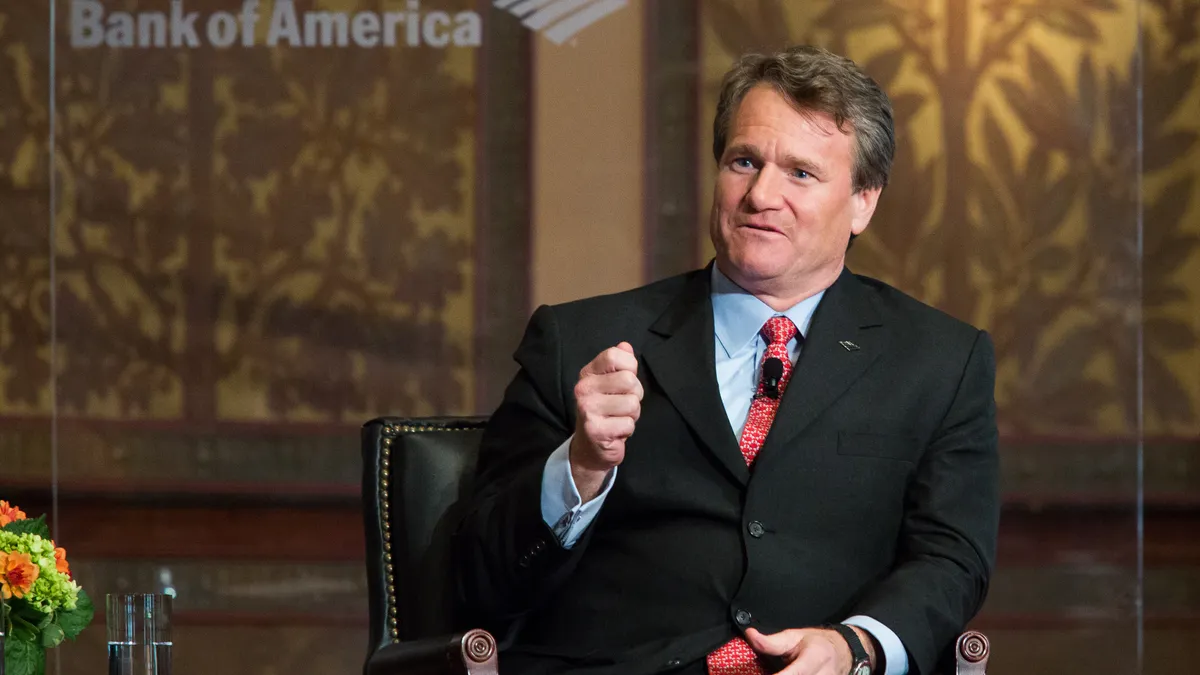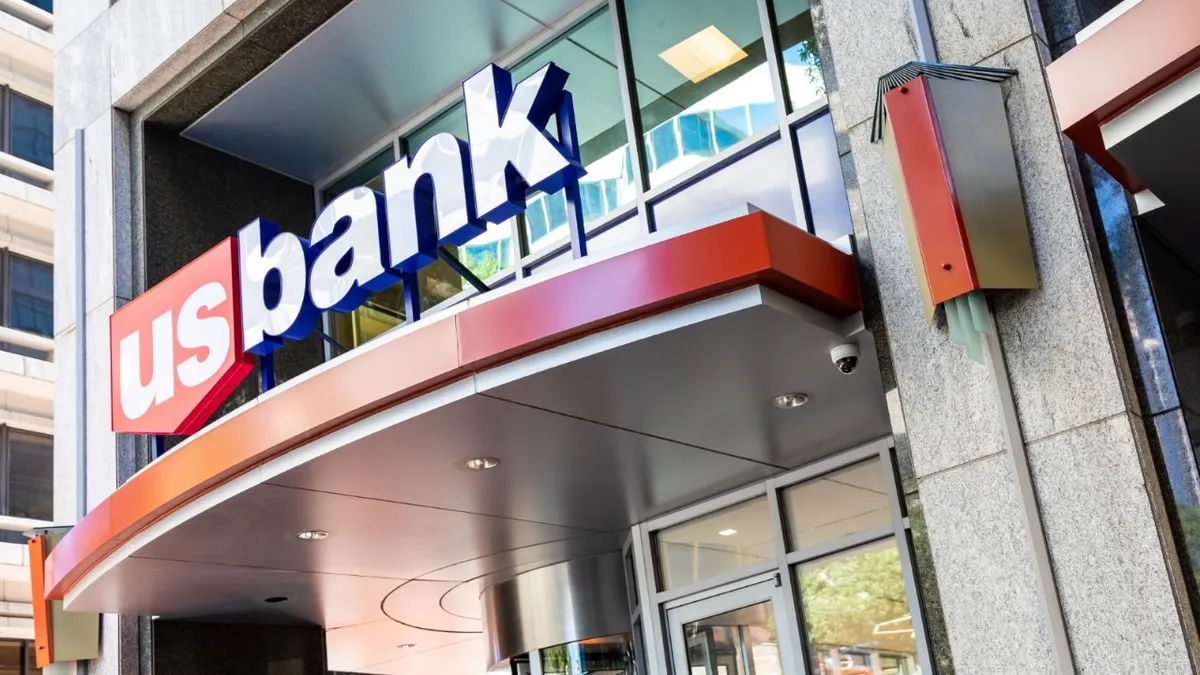Bank of America has cut 1,000 jobs so far this month and plans to cut another 3,000 by the end of June, according to figures it disclosed during a quarterly earnings call Tuesday.
The bank’s headcount dropped to 216,000 on Friday, CFO Alastair Borthwick told analysts, according to American Banker. That’s down from the 217,059 it counted as of March 31.
Further, the bank expects that number to drop to 213,000 in the second quarter, excluding summer interns, American Banker and the Financial Times reported.
Ask the September 2022 iteration of CEO Brian Moynihan, and everything’s been steady.
“We employ 210,000 people. And we have employed that amount for the last five or seven years. So it’s been relatively stable,” Moynihan told Fox News that month, according to a transcript seen by Banking Dive. “I’m confident, if we need to manage headcount, when people leave us to go join other employers, we just won’t fill all the jobs.”
But observers Tuesday may have found that did not go to plan.
"We built up more people largely because of the fear last year of the turnover rate that has now gone in half," Moynihan said Tuesday, according to American Banker.
Competition for talent may have pushed the bank to bulk up its staff last year, but a careful reading of Moynihan’s words may indicate that not as many people quit (as quickly) as the bank thought would.
Some of that may stem from Bank of America’s posture in the marketplace. The bank may have picked up talent when the market was hot, but talent may have stayed if it figured it was safer at Bank of America than elsewhere.
One by one this winter, the bank’s contemporaries announced right-sizing campaigns. Morgan Stanley said in December it would let go of 1,600 workers. Goldman Sachs followed with an estimated 3,200. Then BNY Mellon with 1,500, and Capital One with 1,100.
By its messaging, Bank of America may have seemed a port in the storm. A BofA spokesperson told Banking Dive in January the company did not have plans for widespread job cuts.
Reports indicated tightening nonetheless. Bank of America instituted a partial hiring freeze to curb costs and brace for a possible recession, sources told Bloomberg in January. The bank would continue to hire for some key roles, the wire service reported, but would hold off on bringing in new hires until midyear or when the economy improves.
A month later, reports surfaced that the bank was planning to cut 200 investment-banking roles. Still, with more than 200,000 employees companywide, 200 may not register as “widespread.”
A 4,000-job reduction (counting 1,000 so far in April and the 3,000 expected through June), however, represents 2% of Bank of America’s workforce. That’s the same percentage Morgan Stanley aimed to shed when it essentially kicked off the right-sizing season.
A Bank of America spokesperson Tuesday maintained that attrition — not layoffs — accounted for April’s reduction of 1,000 employees.
A number of theories could explain the math. It could be that these were open positions the bank decided in April to stop counting.
Or perhaps 1,000 employees did decide to quit within two weeks.
But it’s also possible that the math and the messaging don’t match.
Borthwick, for his part, stuck to the math. Second-quarter headcount reductions are set to save the bank up to $500 million, he said, adding that more job cuts are expected in the second half of the year.
"We expect continued sequential expense declines in the third quarter and then again in the fourth quarter as we benefit from continued headcount discipline and attrition through time," Borthwick said.
Bank of America’s noninterest expenses jumped roughly 4.5% in the first quarter, compared with the previous three-month span, Tuesday’s earnings report showed.
Some of that could be explained by adjustments unique to the first quarter: That’s when bonuses typically are paid out. Moynihan, however, credited the bank’s boosting of its minimum hourly wage — from $21 to $22 — for some of the increase. But that’s hardly a first-quarter issue: The wage bump took effect in June.
Explanations behind the math may be fuzzy, but one thing became clear Tuesday: At America’s second-largest bank, something had to give.















